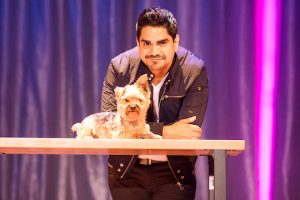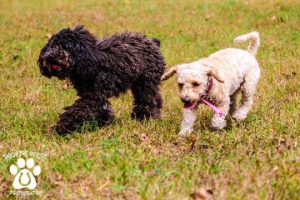History comes alive during the summer camp at the Brandywine Battlefield Park. Former battlefields turn into theaters of spirited reenactment and the museums double as classrooms. It's all in the name of preserving, teaching, and understanding American history as America fought to become a unified nation. The result is that campers between the grades of kindergarten through seven have the opportunity to assume the life of a revolutionary solider. Education is paramount, and that is evident in the vivid experience that the kids get to have.

Though weeks are divided by grade level, everyone receives Military Training 101 - Colonial Style. From days devoted to learning about artillery and medical procedures to a popular session that whets campers' appetites for Colonial cuisine, participants receive hands-on, learning opportunities.
For many of the 30 campers attending the fourth week of camp, this is a summer tradition. For kids like Jack, Sam and Matt, they've been coming for five years. "I've been coming six years," Nick chimed in.
Jacob eagerly states that's he's been coming for two, but is determined to be back next summer. And he's not the only one. Many of the campers said that they will come back again because they not only learn about history, but they get to participate in activities that help them understand the reality of that history.
Susanne, a mother of one of the campers, remembers how, after the first day of the first time her son went to camp, he said, "I'm doing this next year." This was huge as he had attended camp without a friend, but had still thrived on the action and the education.
For many of the participants, Capture the Flag is a favorite activity for the campers; an activity that lets them race across the field and engage in mock battle where one team is American and the other is British. The goal is to capture the other nation's flag, which is hidden prior to the engagement. But Capture the Flag isn't the only favorite activity.
Learning about artillery is equally fun, the campers said. They learn about cannons before using launchers to send water balloons flying through the air so that they can understand the notions of trajectory and witness the physics of a cannonball careening through the air and hitting a target.
Kids also talked about how they learned about the role of a powder monkey, a boy who was usually between 10 to 14 years of age, and whose job it was to hand over the powder magazines to soldiers. Another aspect is learning about the medical world. Campers are taught to understand why such things as amputation were necessary and that gangrene was a serious concern on the battlefield as it was a fatal infection.

While the highlight of Thursdays is the meal, (which parents are invited to join), first, there is the typical lesson, followed by eager questions. In past years, rabbit has been served. (Not this year due to a short supply from local farmers). This sparks a discussion regarding the fact that rabbits were actually not indigenous to the area, for they hadn't migrated from the south. Campers, such as William, wanted to know why fresh vegetables weren't available to soldiers, and he and other campers are reminded that the wintery climate made growing vegetables impossible.
The lessons go on: Summer fruit such as apples and apricots were dried so as to last longer and that anyone living in the area that had a pineapple was a person of means, as pineapple was imported from the Caribbean and was also a symbol of friendship. Watermelon was also a huge favorite. When asked why fruit was so important and valuable to soldiers, camper Nick chimes up that scurvy was a danger. When asked what scurvy was, he replied that it was caused by a lack of Vitamin C. Having studied aspects of the Revolutionary War since the 3rd grade, this 5th grader assuredly announced that he "knows everything" about the war.
Then, it's food time. While the campers had been exploring the Benjamin Ring House, the site of Washington's Headquarters, the staff has been readying meals in cast iron pots, pans, and Dutch ovens, fixing traditional meals; grilling beef, pork and duck, as well as bacon, scrapple, and a dish called bubble and squeak, made of apples and onions. It’s named for the sounds it makes while cooking.
While eagerly scooping up these foods, kids also eagerly pounced on green beans and beets. But, the highlight is the ice cream — vanilla and chocolate chip — that both staff and campers have made, grinding ice, salt and flavoring to create the dessert.
So what are the campers doing when they're not eating? Well, they're learning about the war in a room filled with maps of battlefields that show strategic plans of attack, uniforms of both British and American soldiers, flags that represented the varying factions of rebelling forces and medical instruments that help them understand what physicians faced on the battlefield. As for the gift shop? They tend to sprint towards the cap guns, similar to what they use in their mock battles.
Learning is at the epicenter of the camp. Iris learned what year the battle was fought in and Gabriel learned the specific location of the battle, details that they had not yet learned in school. For the staff, the educational aspect is equally important. The program is stimulating interest in history and a determination to feel it firsthand.
According to Andrew Outten, the director of the Education Department, who has been with the Brandywine Battlefield since 2010, the camp's mission is to stimulate and enthusiasm and appreciation for history, and to emphasize the importance of artifacts and the notions of preservation. It's about educating youth in a social manner that makes them want to come back year after year. As he said, "there is a dying appreciation for history."
About Erin Moonyeen Haley
After graduating from the University of the Arts in Philadelphia with a degree in Writing for Film and Television, Erin made the cross-country road trip to Los Angeles where she worked nights at Disneyland before landing assistant gigs at agencies and various production companies. After five years, she decided on a career change and returned to the East Coast, enrolling in West Chester University to earn a Masters in English. Now, she is going on to earn her teaching certificate to teach English in the high school classroom. Throughout all of these years, she's been able to keep her resume eclectic, interning at the Cannes Film Festival, studying art history in Florence, Italy, volunteering for Habitat for Humanity and writing freelance articles for such websites as EHow.com, garden guides.com and suite101.com. In the end, writing, traveling, and teaching remain her ultimate passions.


 (6 votes, average: 4.50 out of 5)
(6 votes, average: 4.50 out of 5)

Comments